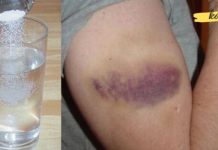Stroke vs. Heart Attack: What’s the Difference? Here’s What You Need to Know

Many people confuse different types of cardiovascular conditions, especially stroke and heart attack. While both are serious and potentially life-threatening medical emergencies, they are very different in nature, causes, symptoms, and outcomes.
Unfortunately, cardiovascular diseases (CVDs) are becoming increasingly common—even among younger individuals. Today, a growing number of people under the age of 45 are being diagnosed with heart and brain-related issues. This makes it especially important to understand the differences between a stroke and a heart attack, how they manifest, and what to do in case of an emergency.
Understanding the Basics
What is a Heart Attack? (Myocardial Infarction)
A heart attack, or myocardial infarction (MI), occurs when blood flow to the heart muscle is blocked. This blockage is usually caused by a buildup of fat, cholesterol, or other substances (collectively called plaque) in the coronary arteries. If a piece of plaque breaks off, it can form a blood clot that cuts off oxygen supply to part of the heart. As a result, heart tissue begins to die (necrosis).
Depending on the severity, a heart attack may be:
Acute
Recoverable
Scarring (leaves permanent damage to heart tissue)
While most people associate the term “heart attack” with the heart itself, it can technically be used to describe tissue death due to lack of oxygen in other organs as well, although this is rare in layman usage.
What is a Stroke?
A stroke happens when blood supply to the brain is interrupted or reduced. This prevents brain tissue from getting the oxygen and nutrients it needs, and brain cells begin to die within minutes.
There are two main types of strokes:
Ischemic stroke – caused by a blocked or narrowed artery, often due to a clot. It’s also referred to as a cerebral infarction.
Hemorrhagic stroke – caused by a burst blood vessel, leading to bleeding in the brain.
The key difference between a stroke and a cerebral infarction lies in their presentation. While both may affect brain tissue, a stroke involves broader neurological symptoms, whereas a cerebral infarction typically presents more localized effects depending on the area of the brain affected.
Key Differences: Stroke vs. Heart Attack
Though both conditions involve interrupted blood flow, the location and immediate risks are different.
In a heart attack, the heart muscle is deprived of oxygen, leading to muscle damage or death.
In a stroke, it’s the brain that suffers from the lack of oxygen, leading to neurological damage.
Risk and Outcomes
In the case of a stroke, you generally have a few hours (usually 2–3) to administer emergency care to prevent irreversible brain damage.
In contrast, a heart attack can be so sudden and severe that emergency responders may not arrive in time if not called immediately.
Recovery outcomes also differ:
Stroke recovery can be prolonged and often results in long-term disability, such as paralysis or speech issues.
After a heart attack, the damaged heart tissue does not regenerate. Instead, it is replaced with scar tissue, which can lead to chronic heart failure and increase the risk of future attacks.
How to Tell the Difference: Symptoms Compared
Recognizing the signs and symptoms of each condition can save lives. Although some symptoms can overlap, most are distinct.
Common Stroke Symptoms
Sudden, intense headache
Difficulty speaking or slurred speech
Facial drooping on one side
Numbness or weakness, especially on one side of the body (arms or legs)
Loss of coordination or balance
Confusion or trouble understanding speech
Difficulty swallowing
Seizures in some cases
🧠 Remember the acronym FAST for stroke:
Face drooping
Arm weakness
Speech difficulty
Time to call emergency services
Common Heart Attack Symptoms
Chest pain or pressure, often described as tightness or squeezing
Pain that radiates to the arms, shoulders, jaw, or back
Shortness of breath
Cold sweats
Fatigue or lightheadedness
Arrhythmia (irregular heartbeat)
Symptoms that worsen with physical activity (e.g., climbing stairs)
In some cases, pain may occur at rest, especially at night
🫀 Important: Women may experience atypical symptoms such as abdominal pain, nausea, or jaw pain rather than classic chest pressure.
Symptoms They Share
Although stroke and heart attack affect different organs, they can share a few general warning signs:
Elevated blood pressure
Pale or bluish skin tone
Fainting or loss of consciousness
Difficulty breathing
Cold, clammy skin
Confusion or anxiety
Symptoms that resemble food poisoning or indigestion (especially during a heart attack)
Why It’s Critical to Know the Difference
Quick recognition of a stroke or heart attack could mean the difference between life and death — or disability and full recovery. Treatment for both must begin within minutes, and they require very different interventions:
A heart attack may require CPR, clot-busting drugs, angioplasty, or surgery.
A stroke may require clot removal, brain scans, and medications to control swelling or bleeding.
Do not self-diagnose. If you or someone near you experiences any of the above symptoms, call emergency services immediately.
Conclusion
While both strokes and heart attacks are life-threatening cardiovascular events, they involve different organs, causes, and symptoms. Knowing the key differences between a stroke and a heart attack helps you react quickly and seek the right type of help.
Time is of the essence in both cases — the faster the treatment, the better the chances of survival and recovery. Stay informed, recognize the signs, and don’t hesitate to act in an emergency.












